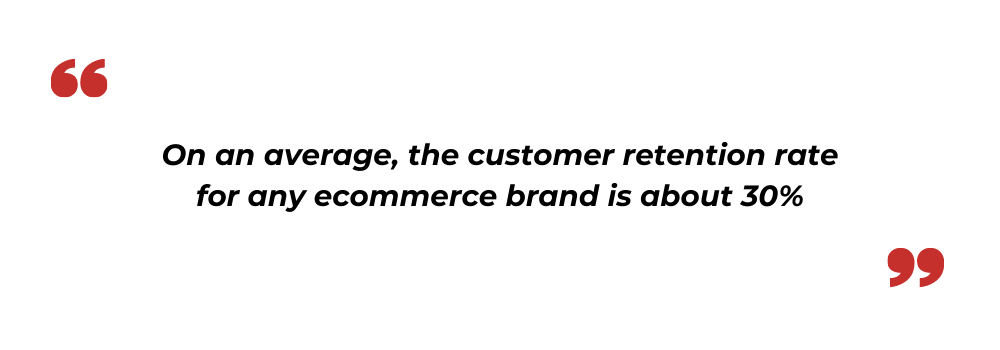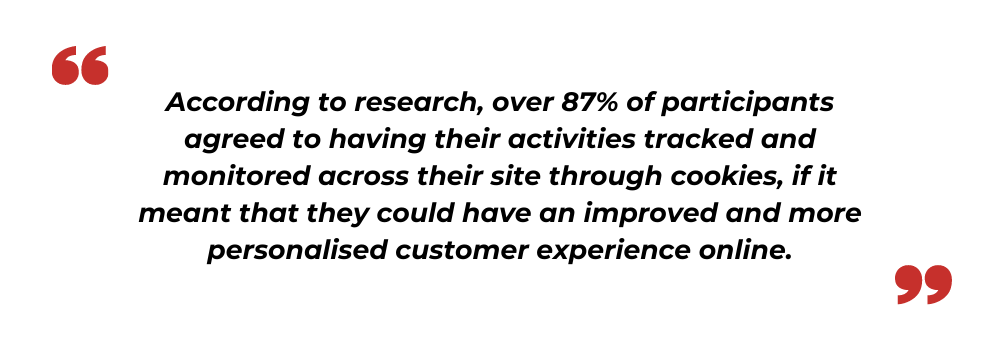Customer retention is key to increasing revenue and improving the annual turnover for any organisation. Once the customers are satisfied with the organisation’s product or service, they will tend to come back and reuse the company’s products or services time and again. Optimising their experience, improving customer service, channelling your marketing strategies to best suit their needs are only some of the ways you can work towards improving customer retention for your brand.
Customer retention analytics, or customer analytics, are tools that companies can use to understand their customers better so that they can build better strategies, improve their products or services, and reach out to wider audiences to help their company grow. So what exactly is customer service analytics? How does it help companies increase and maintain their customer base?
Customer Analytics: What is it?

On an average, the customer retention rate for any ecommerce brand is about 30% (Clearco). This means that only 3 out of every ten customers for any brand go back to the same product or service for a second time instead of trying a new one again. There are multiple reasons why this could take place, such as:
-
There are similar products or services that are easier to use than your product or service
-
Your competitors are more accessible
-
Your customer service is not as consumer-friendly and there are often delays at resolving issues
-
Your product or service shipment lags or has unnecessary delays
-
You have less brand visibility and your consumer engagement rate is low
…and many others. Clearly, there are a large number of reasons as to why you as a business could be losing out on your customers. So how do you find out what exactly affects your organisation’s ability to retain more customers?
Enter customer retention analytics.
Read more: The Age of Digital Transformation: Top AI and ML 2022 Trends
Customer retention analytics is a series of processes, KPIs and metrics that can be used to determine how many of your customers leave your business after purchasing your product or engaging with your services. It also helps determine the reasons as to why it happens based on data-driven insights so that organisations can use these insights to alter their strategies that will improve performance and increase the retention rate.
Customer churn is the number of customers that leave your business, and it can have many reasons, as we have mentioned above. To avoid customer churn, companies have to build their products, their services, their customer service, grievance redressal portal, marketing and communication channels, sales funnels, and more to optimise the user’s experience.
The main factor that affects the customer churn rate is the level of satisfaction a customer experiences after they use your product or service. If the satisfaction level is high, and the post-sale service is quick, the customer will be much more likely to engage with your product than otherwise. So, organisations, regardless of their size, need to focus on building a strong foundation for their product and consumer satisfaction, to attain a higher consumer retention rate.
[Text Wrapping Break]Customer retention analytics helps understand the consumer’s behavioural patterns, purchasing patterns, and sheds light on what strategies are working and which ones are not. Customer analytics works best when it is performed at regular intervals so that companies can understand their market landscape, evolving consumer behaviour, and get preemptive insight on their existing strategies.
Read more: Building Successful Customer Engagement Strategies
How does customer analytics work to improve customer retention?
According to recent reports, more than 65% (Smallbizgenius) of all business, especially for ecommerce companies, comes from existing customers. This means that customer acquisition, or widening the reach to gain more customers in the market, is less important than maintaining a positive relationship with the ones you have already.
Improving customer retention with improving customer experience
In newer, smaller businesses, your existing customers can build your organisation. If they have a positive experience with your product or service, they are more likely to recommend you to their immediate circle or discuss their experience with them. It is an often missed but highly valuable marketing tool that new businesses tend to overlook.
So the first and probably the most important step is to improve the customer’s experience with your product or services. Customer retention analytics provides companies with data-driven metrics to highlight what is working out best for your brand and where the areas of improvement lie.
Once the metrics have been analysed by the customer analytics services team, they can be used to create actionable strategies that will take the pain points into consideration and improve upon them.

Increasing customer retention with personalising online consumer experience
According to research, over 87% (Retaildive) of participants agreed to having their activities tracked and monitored across their site through cookies, if it meant that they could have an improved and more personalised customer experience online. This means that customers do not mind sharing their personal data in order to have a better consumer experience. Customer analytics reports help companies use the consumer data freely provided to understand their existing customers better so that they can use it to personalise their experience upon every visit. Customers want to feel like they are having a face-to-face and one-on-one interaction when they visit an online or ecommerce store, which can be achieved online by optimising their personalised experience.
Using consumer data and insights provided with customer analytics, companies can work towards achieving this outcome.
Improving customer retention rate with digital marketing tools and social media marketing
The third factor that is involved in building a higher customer retention rate is to improve the communication channels that the brand has with its consumers. This is more than just enhancing the customer service and after sales service. It includes all sales and promotional strategies, marketing language and tone, advertisements, engagement activities, and more, that could lead to building a better interaction portal with their customers.
Read also: 84% companies boosted ROI with enhanced CX – Why customer data analytics matters
Brands that engage with their customers and audiences have a higher customer retention rate than brands that do not. In the digital age with multiple social media channels, it is easy to lose your customer’s attention and it can often lead to them forgetting that your brands exist. But, sending out regular emails and reminders is not enough. Oftentimes, even though it can be a great marketing tool, email marketing can lead to your mails landing up in the spam folder of your customer, which ends up doing more harm than good for your online visibility and SEO. So, companies have to get creative with their brand engagement. How does one do that?
Social media marketing acts as a great digital marketing tool to help companies engage with their customers more and build relationships with them. It creates an easily accessible platform for companies to interact with their audience, get feedback, and even list out new products and services to their customers. It eliminates the one-sided approach to customer engagement and communication and opens up an interactive platform for two-way communication. This approach makes the customer feel included in your organisation and it personalises their experiences, while providing you with valuable data points and feedback that you can use to tailor your future marketing strategies.
Using customer retention analytics as a means of understanding what digital and social media strategies work best with your target consumer base and audience, you can easily improve the way you interact with your customers.
Increasing customer retention with loyalty programmes, discounts and other benefits
Companies can use customer service analytics to develop various loyalty programmes, offer discounts and create membership-like benefits for their long term or repeat customers. A reward system helps give the customer a push to make the next purchase after the first one, which is what creates repeat customers and builds brand loyalty. The type of discounts, the loyalty programmes, or membership benefits that work best for any brand can be determined by the type of audience the company has. This can be done by conducting customer analytics and getting insights on the consumer’s purchasing power, spending frequency, and ecommerce habits.
Read more: Social Media Trends to Watch Out For in 2022
Final Thoughts
Customer analytics services help companies take more meaningful and impactful actions to improve their customer retention rate. The primary goal is to achieve maximum customer satisfaction with their products and services so that they can continue to deliver products and services of high quality to more consumers at a fast, yet calculated pace. The return on any company’s investment is directed by the consumer, and consumer analytics help companies increase their ROI on their spending.









